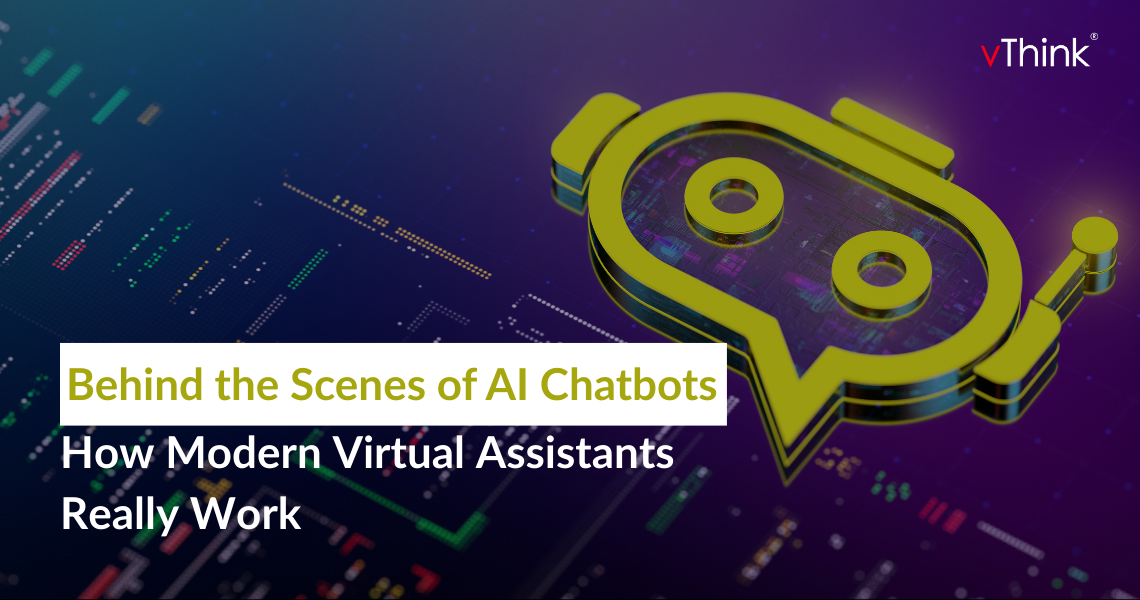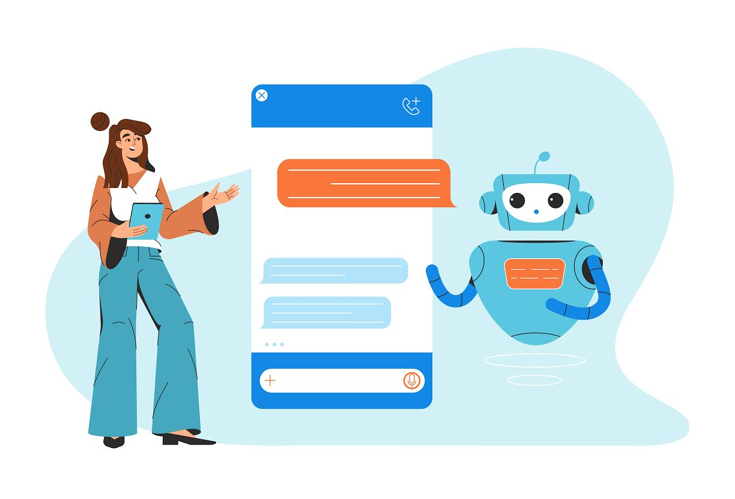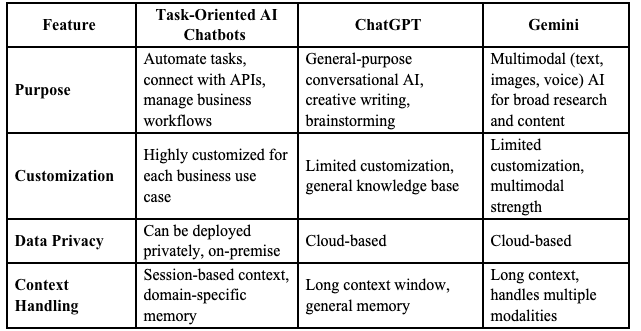Behind the Scenes of AI Chatbots: How Modern Virtual Assistants Really Work
In today’s hyper-connected world, AI chatbots have evolved from simple FAQ responders into intelligent virtual assistants that help millions of people every day.

In today’s hyper-connected world, AI chatbots have evolved from simple FAQ responders into intelligent virtual assistants that help millions of people every day. Whether it’s booking a flight, answering customer queries at midnight, or assisting doctors with patient triage, modern chatbots do much more than mimic human conversation — they understand, learn, and automate tasks intelligently.
What Exactly Is an AI Chatbot?
At its core, an AI chatbot is a software agent that can engage in human-like conversation through text or voice. Unlike older bots that worked on scripted flows and simple keywords, today’s intelligent bots leverage Natural Language Processing (NLP), Machine Learning (ML), and sometimes even deep learning models to decode the real meaning behind what you say.
Modern AI chatbots are built to
- Understand natural, unstructured human language.
- Detect user intentions and emotions.
- Remember context within a conversation.
- Generate relevant, human-like responses.
- Automate tasks by connecting to backend systems.
From customer support chat widgets on websites to smart voice assistants in our homes, these virtual agents have become an indispensable layer of digital interaction.

How Do AI Chatbots Really Work?
While interacting with a chatbot feels simple, what happens in the background is a sophisticated, multi-step process. Let’s break it down into key components.
Natural Language Understanding (NLU)
This is the front door. When a user types or speaks, the chatbot first converts this raw input into structured data it can work with. The NLU component analyzes the sentence, identifies parts of speech, named entities (like dates, places, names), and determines the user’s intent — such as “book a hotel”, “check weather”, or “cancel a reservation”.
Advanced NLU relies on pre-trained language models that have learned the statistical patterns of human communication from billions of text samples.
Dialogue Management
Once the intent is detected, the Dialogue Manager decides what to do next. This includes
- Tracking conversation context so it doesn’t repeat itself or ask the same question twice.
- Managing the state of the conversation — whether it’s starting, in the middle, or ending.
- Handling interruptions and resuming topics naturally.
- Deciding when to escalate to a human agent.
Sophisticated bots often use a combination of rule-based flows and dynamic policy learning to manage conversations smoothly.
Response Generation
After understanding the input and deciding what action to take, the chatbot generates a response. This can happen in two ways
- Retrieval-based: It picks a predefined reply from a set of templates based on intent and context.
- Generative: It uses a language generation model to craft a unique, humanlike response on the fly.
Most commercial bots blend both approaches for reliability and flexibility.
Integrations with External Systems
This is what turns a chatbot from a simple chitchat tool into a powerful virtual assistant. The bot can call APIs to
- Check your flight status.
- Reserve a table at your favorite restaurant.
- Fetch your account balance.
- Process refunds.
This backend orchestration happens in real-time, making the chatbot truly useful for handling tasks autonomously.
Key Capabilities of Advanced Chatbots
Today’s best virtual assistants don’t just reply; they are equipped with features that enhance usability and trust
- They remember the flow of conversation within a session and keep multi-turn interactions coherent.
- They greet users by name, remember preferences, and adjust responses accordingly.
- They handle not only text but also images, voice, and sometimes video inputs.
- They suggest next actions or remind users about tasks without being asked.
They pass the conversation to a human agent when needed, including all previous context.
Where Are AI Chatbots Used?
AI chatbots have widespread applications across industries
- 24/7 query handling and support.
- Personalized shopping assistance.
- Basic medical help and appointment booking.
- Study and learning companion.
- IT and HR automation.
- Reduces expenses and boosts satisfaction.
How Do They Compare with ChatGPT and Gemini?
How Do They Compare with ChatGPT and Gemini? While today’s commercial chatbots, ChatGPT, and Gemini all rely on advanced NLP, they differ in scope and specialization.

In essence, ChatGPT and Gemini shine when you want creative answers or broad knowledge exploration. Task-oriented chatbots excel when you want secure, company-specific automation and real-time action.
How Do AI Chatbots Ensure Security and Privacy?
How Do AI Chatbots Ensure Security and Privacy? Trust is non-negotiable when bots handle personal conversations and sensitive transactions. Responsible chatbot systems must follow best practices, including
- Secures all interactions over HTTPS to prevent data leaks.
- Stores only what is necessary to maintain session context.
- Removes identifiable information from chat logs used for training.
- Clearly informs users about what data is collected and how it’s used.
- Follows global privacy laws and industry-specific standards.
- Logs interactions and system activity to detect misuse and ensure accountability.
Such measures ensure users feel safe while benefiting from smart automation.
The Future of AI Chatbots
Looking ahead, chatbots will become even more capable and human-like. They will understand not just text but also images, video, and real-time sensor data. They will detect tone and mood, adjusting responses naturally to match the user’s emotions. Continuous self-learning through privacy-preserving methods like federated learning will make them smarter without risking user data. Personalization will go deeper, with bots understanding unique preferences and anticipating needs before being asked. Seamless integration with wearables and smart devices will make conversations blend into daily life, from smart homes to connected cars. These advancements promise a future where digital assistants act as trusted co-pilots for everyday tasks.
Conclusion
Modern AI chatbots are far more than scripted autoresponders — they are living examples of NLP, machine learning, and real-time integrations working in harmony. They can interpret complex language, handle nuanced contexts, automate entire workflows, and continuously learn to serve us better.
While general-purpose AI models like ChatGPT and Gemini are amazing for creativity and research, task-focused chatbots deliver reliability, compliance, and automation tailored to real-world workflows. Together, they shape an ecosystem where humans and machines collaborate more intelligently than ever before.
If you’re considering building or deploying an AI chatbot for your business, now is the perfect time to embrace this transformative technology — and unlock smarter interactions, happier customers, and greater efficiency.



